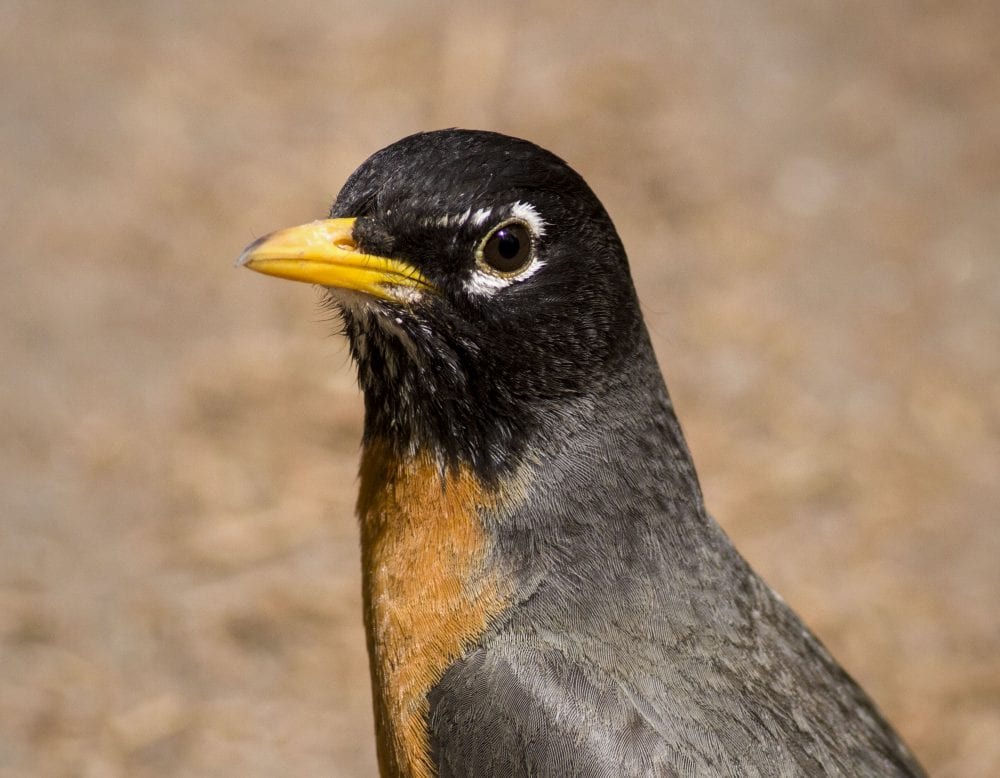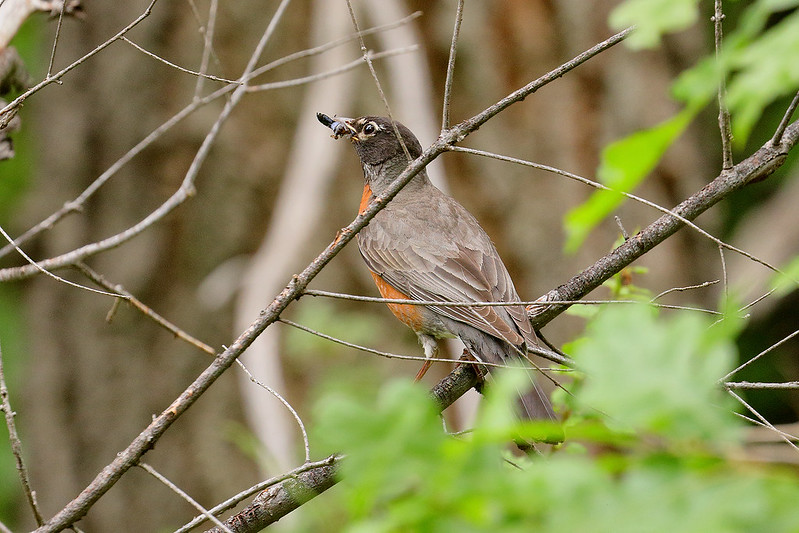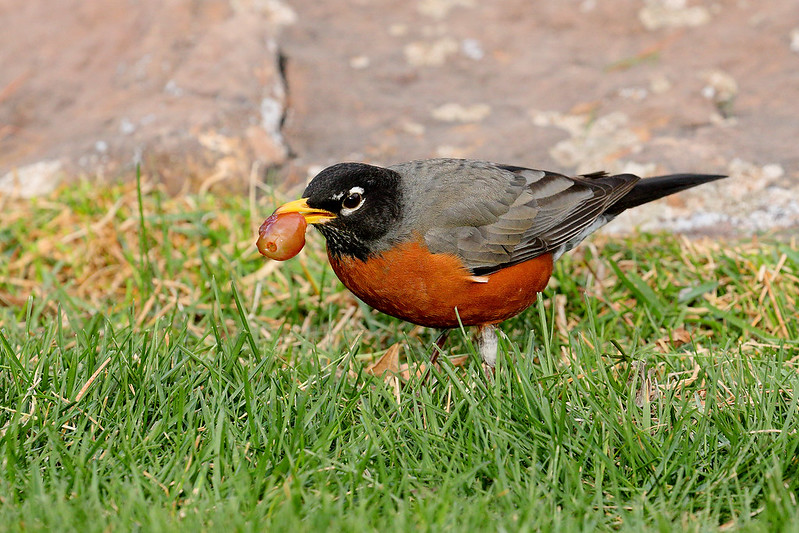
By Rachel Landman
American Robins are a familiar feathered friend here in Northern New Mexico and across all of North America. They are found here all year round, but you have a greater chance of seeing them out and about now that the weather is warming up. This spring, you’ll likely find a robin running across your lawn or around your local park on the hunt for earthworms!

The next time you see an American Robin on the ground, watch it closely. You’ll notice that it runs a few steps, pauses, cocks its head to one side, and then dives its head down to the ground to snatch up a worm. Observe that its eyes are on the sides of its head — rather than the front like ours.
When it turns its head to the side, it is using one eye to scan the ground for worms. When it sees one wriggling around, it plucks it out of the earth for a tasty snack and then hops a few more steps to do it all over again!
The diet of an American Robin consists of about 40% insects and 60% fruits. The main part of their diet changes both with the season and the time of day. They eat more earthworms, snails, spiders, and insects in the mornings and more fruit later in the day, and they eat more creepy crawlies in the spring and summer and more fruit in the winter months. Robins eat a wide variety of fruits, including juniper berries and cherries. Some of our local bird feeding enthusiasts have found that robins are fond of grapes!
In addition to being a predator to worms and insects, American Robins have occasionally been recorded eating small snakes, shrews, skinks, and frogs. While robins are a predator for some of our smaller critters, they have predators of their own, too.

Adult American Robins are preyed on by hawks and owls, roaming house cats, and larger snakes. The eyes on the sides of their head aren’t just for looking for worms. The placement of their eyes provides a wide range of vision that helps them scan their surroundings for predators. Robin eggs and young have a different set of predators to worry about than the adults. Squirrels, snakes, raccoons, and crows or ravens are known to look for nests and eat the eggs inside.
In addition to the predators mentioned above, humans have an impact on robin populations. Because robins frequently eat from lawns, they are vulnerable to human-caused pesticide poisoning. Changes in their populations can serve as indication of larger environmental problems in their habitats, like the overuse of chemicals.
Want to learn more about the American Robin? Check out its profile on All About Birds.

Thanks for the nice article and how the Robins use their eyes is facinating.